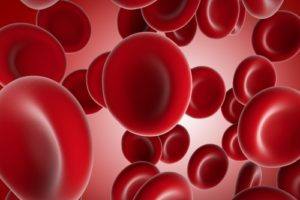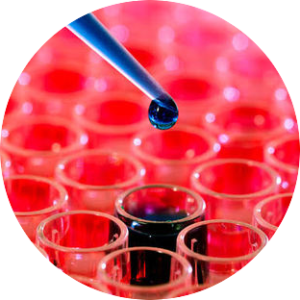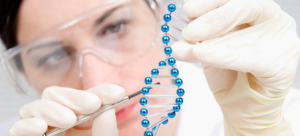Bay Biosciences provides high quality, clinical grade bio-samples, cryogenically preserved tissue, sera (serum), plasma and peripheral blood mononuclear cells (PBMC) biofluid specimens from patients diagnosed with Sickle Cell Disease.
The sera (serum), plasma and PBMC biofluid samples are processed from patient’s peripheral whole-blood using customized processing protocols. The Sickle Cell Disease bio-specimens are collected from unique patients diagnosed with Sickle Cell Disease and are provided to a valued pharmaceutical customer for translational research, genomics, proteomics and biomarker research, drug discovery and development.

Sickle Cell Disease (SCD)
Sickle Cell Disease (SCD) is a group of inherited red blood cells (RBC) disorders. Healthy red blood cells are round, and they move through small blood vessels to carry oxygen to all parts of the body. In patients who has SCD, the red blood cells become hard and sticky and look like a C-shaped farm tool called a “sickle”. The sickle cells die early, which causes a constant shortage of red blood cells. Also, when they travel through small blood vessels, they get stuck and clog the blood flow. This can cause Pain and other serious problems such infection, acute chest syndrome and stroke.
The most common type of SCD is known as sickle cell anemia (SCA). Sickle Cell Anemia is a red blood cell inherited disorder in which there aren’t enough healthy red blood cells to carry oxygen throughout the patients body. It results in an abnormality in the oxygen-carrying protein hemoglobin found in red blood cells which leads to a rigid, sickle like shape under certain circumstances.
Normally, the flexible, round red blood cells move easily through blood vessels. In sickle cell anemia, the red blood are shaped like sickles or crescent moons. These rigid, sticky cells can get stuck in small blood vessels, which can slow or block blood flow and oxygen to parts of the body. There’s no cure for most people with sickle cell anemia. But treatments can relieve pain and help prevent complications associated with the disease.
Problems in sickle cell disease (SCD) typically begin in pediatric patients around 5 to 6 months of age. A number of health problems may develop, such as attacks of pain (“sickle cell crisis”), anemia, swelling in the hands and the feet, bacterial infections and stroke. Long term pain may develop as patients get older. Sickle cell disease occurs when a person inherits two abnormal copies of the HBB β-globin gene that makes hemoglobin, one from each parent. This gene occurs in chromosome 11 (one of the 23 pairs of chromosomes in humans). Several subtypes exist, depending on the exact mutation in each hemoglobin gene. An attack can be set off by temperature changes, stress, dehydration and high altitude. A patients with a single abnormal copy does not usually have symptoms and is said to have sickle cell trait, such patients are also referred to as carriers.
Types of Sickle Cell Disease (SCD)
Following are the most common types of SCD’s:
HbSS
Patients who have this form of sickle cell disease (SCD) inherit two sickle cell genes (“S”), one from each parent. This is commonly called sickle cell anemia and is usually the most severe form of the disease.
HbSC
Patients who have this form of SCD inherit a sickle cell gene (“S”) from one parent and from the other parent a gene for an abnormal hemoglobin called “C”. Hemoglobin is a protein that allows red blood cells to carry oxygen to all parts of the body. This is usually a milder form of sickle cell disease (SCD).
HbS beta Thalassemia
Patients who have this form of sickle cell disease (SCD) inherit one sickle cell gene (“S”) from one parent and one gene for beta thalassemia, another type of anemia, from the other parent. There are two types of beta thalassemia: “0” and “+”. Those with HbS beta 0-thalassemia usually have a severe form of sickle cell disease (SCD). Patients with HbS beta +-thalassemia tend to have a milder form of sickle cell disease (SCD).
Following are rare types of Sickle Cell Diseases (SCD’s):
HbSD, HbSE, and HbSO
Patients who have these forms of sickle cell disease (SCD) inherit one sickle cell gene (“S”) and one gene from an abnormal type of hemoglobin (“D”, “E”, or “O”). Hemoglobin is a protein that allows red blood cells to carry oxygen to all parts of the body. The severity of these rarer types of SCD varies.
Sickle Cell Trait (SCT)
HbAS
Patients who have sickle cell trait (SCT) inherit one sickle cell gene (“S”) from one parent and one normal gene (“A”) from the other parent. This is called sickle cell trait (SCT). Patients with SCT usually do not have any of the signs of the disease and live a normal life, but they can pass the trait on to their children. Additionally, there are a few, uncommon health problems that may potentially be related to sickle cell trait.

Sickle Cell Disease (SCD) Symptoms
Signs and symptoms of sickle cell anemia usually appear in children around 5-6 months of age. They vary from person to person and change over time. Signs and symptoms can include:
- Anemia: Sickle cells break apart easily and die, leaving the patient with too few red blood cells. Red blood cells usually live for about four months before they need to be replaced. But sickle cells usually die in 10 to 20 days, leaving a shortage of red blood cells causing anemia. Without enough red blood cells, the body cannot get enough oxygen, causing fatigue to the patient.
- Episodes of Pain: Periodic episodes of pain, called pain crises, are a major symptom of sickle cell anemia. Pain develops when sickle-shaped red blood cells block blood flow through tiny blood vessels to your chest, abdomen and joints. Pain can also occur in the bones. The pain varies in intensity and can last for a few hours to a few weeks. Some patients have only a few pain crises a year. Others have a dozen or more pain crises a year. A severe pain crisis requires a hospital stay. Some adolescents and adults with sickle cell disease (SCD) also have chronic pain, which can result from bone and joint damage, ulcers, and other causes.
- Swelling of Hands and Feet: The swelling is caused by sickle-shaped red blood cells blocking blood flow to the hands and feet.
- Frequent Infection: Sickle cells can damage the spleen, leaving patient more vulnerable to Infection. Doctors commonly give infants and children with sickle cell anemia vaccinations and antibiotics to prevent potentially life-threatening Infection, such as pneumonia.
- Delayed Growth or Puberty: Red blood cells provide the body with the oxygen and nutrients needed for growth. A shortage of healthy red blood cells can slow growth in infants and children and delay puberty in teenagers.
- Vision problems: Tiny blood vessels that supply the blood to the eyes can become plugged with sickle cells. This can damage the retina, the portion of the eye that processes visual images and lead to vision problems.
Causes of Sickle Cell Disease (SCD)
Sickle Cell Disease (SCD) is a genetic condition that is present at birth. It is inherited when a child receives two sickle cell genes, one from each parent. Sickle cell disease (SCD) is caused by a mutation in the gene that tells the body to make the iron-rich compound that makes blood red and enables red blood cells to carry oxygen from the lungs throughout the body (hemoglobin). In sickle cell disease, the abnormal hemoglobin causes red blood cells to become rigid, sticky and misshapen. Both mother and father must pass the defective form of the gene for a child to be affected.
Sickle Cell Disease (SCD) Complications
Sickle cell disease (SCD) can lead to a host of complications, including:
- Stroke: Sickle cells can block blood flow to an area of the brain. Signs of stroke include seizures, weakness or numbness of your arms and legs, sudden speech difficulties, and loss of consciousness. A stroke can be fatal.
- Acute Chest Syndrome: A lung Infection or sickle cells blocking blood vessels in the lungs can cause this life-threatening complication, resulting in chest pain, fever and difficulty breathing. It might require emergency medical treatment.
- Pulmonary Hypertension: Patients with sickle cell disease (SCD) can develop high blood pressure in their lungs. This complication usually affects adults. Shortness of breath and fatigue
are common symptoms of this condition, which can be fatal. - Organ Damage: Sickle cells that block blood flow to organs deprive the affected organs of blood and oxygen. In sickle cell disease, blood is also chronically low in oxygen. This lack of oxygen-rich blood can damage nerves and organs, including the kidneys, liver and spleen, and can be fatal.
- Blindness: Sickle cells can block tiny blood vessels that supply blood to the eyes. Over time, this can damage the eyes and lead to blindness.
- Leg Ulcers: Sickle cell disease (CSD) can cause open sores on the legs.
- Gallstones: The breakdown of red blood cells produces a substance called bilirubin. A high level of bilirubin in the body can lead to gallstones.
- Priapism: In this condition, men with sickle cell disease (CSD) can have painful, long-lasting erections. Sickle cells can block the blood vessels in the penis, which can lead to impotence over time.
- Pregnancy Complications: Sickle cell disease (CSD) can increase the risk of high blood pressure and blood clots during pregnancy. It can also increase the risk of miscarriage, premature birth and having low birth weight babies.

Detailed clinical data, CT scans, hemoglobin diagnostic test, CBC analysis, amniotic fluid, elevated biomarker levels, genetic and metabolic information, histopathological findings associated with the Sickle Cell Disease patient’s specimens is provided to a valued customer for research, development and drug discovery. The Sickle Cell Disease sera (serum), plasma and peripheral blood mononuclear cells (PBMC) biofluid samples are processed from patients peripheral whole-blood using customized collection and processing protocols provided by the researcher.
Bay Biosciences is a global leader in providing researchers with high quality, clinical grade, fully characterized human tissue samples, bio-specimens and human bio-fluid collections from cancer (tumor) tissue, cancer sera (serum), cancer plasma, cancer PBMC and human tissue samples from most other therapeutic areas and diseases.
Bay Biosciences maintains and manages it’s own bio-repository, human tissue bank (biobank) consisting of thousands of diseased samples (specimens) and from normal healthy donors available in all formats and types. Our biobank procures and stores fully consented, deidentified and institutional review boards (IRB) approved human tissue samples and matched controls.
All our human human tissue collections, human specimens and human bio-fluids are provided with detailed samples associated patient’s clinical data. This critical patient’s clinical data includes information relating to their past and current disease, treatment history, lifestyle choices, biomarkers and genetic information. Patient’s data is extremely valuable for researchers and is used to help identify new effective treatments (drug discovery & development) in oncology, other therapeutic areas and diseases. This clinical information is critical to demonstrate their impact, monitor the safety of medicines, testing & diagnostics, and generate new knowledge about the causes of disease and illness.
Bay Biosciences banks wide variety of human tissue samples and biological samples including cryogenically preserved -80°C, fresh, fresh frozen tissue samples, tumor tissue samples, FFPE’s, tissue slides, with matching human bio-fluids, whole blood and blood derived products such as serum, plasma and PBMC’s.
Bay Biosciences is a global leader in collecting and providing human tissue samples according to the researchers specified requirements and customized, tailor made collection protocols. Please contact us anytime to discuss your special research projects and customized human tissue sample requirements.
Bay Biosciences provides human tissue samples (human specimens) from diseased and normal healthy donors; including peripheral whole-blood, amniotic fluid, bronchoalveolar lavage fluid (BAL), sputum, pleural effusion, cerebrospinal fluid (CSF), serum (sera), plasma, peripheral blood mononuclear cells (PBMC’s), saliva, Buffy coat, urine, stool samples, aqueous humor, vitreous humor, kidney stones, renal calculi, nephrolithiasis, urolithiasis and other bodily fluids from most diseases including cancer. We can also procure most human bio-specimens and can do special collections and requests of human samples that are difficult to find. All our human tissue samples are procured through IRB approved clinical protocols and procedures.
In addition to the standard processing protocols Bay Biosciences can also provide human plasma, serum, PBMC bio-fluid samples using custom processing protocols, you can buy donor specific sample collections in higher volumes and specified sample aliquoting from us.
Bay Biosciences also provides human samples from normal healthy donors, volunteers, for controls and clinical research, contact us Now.
日本のお客様は、ベイバイオサイエンスジャパンBay Biosciences Japan またはhttp://baybiosciences-jp.com/contact/までご連絡ください。
